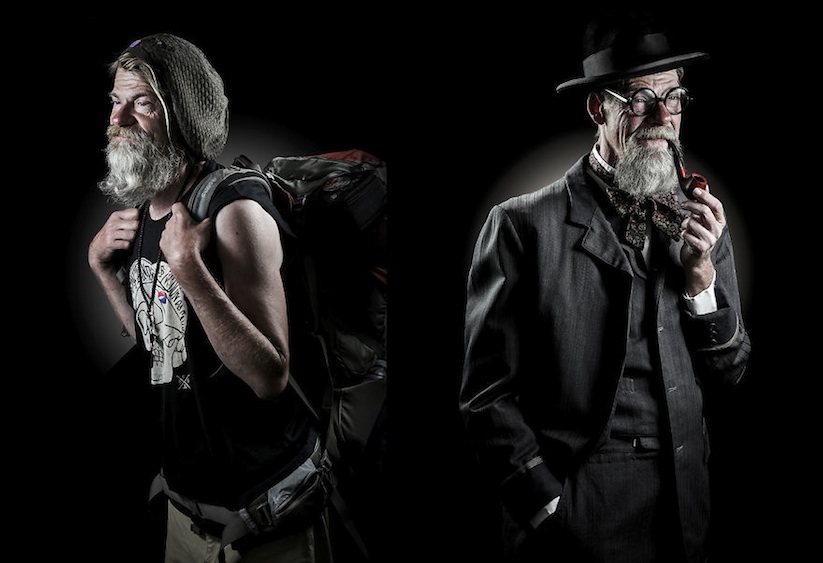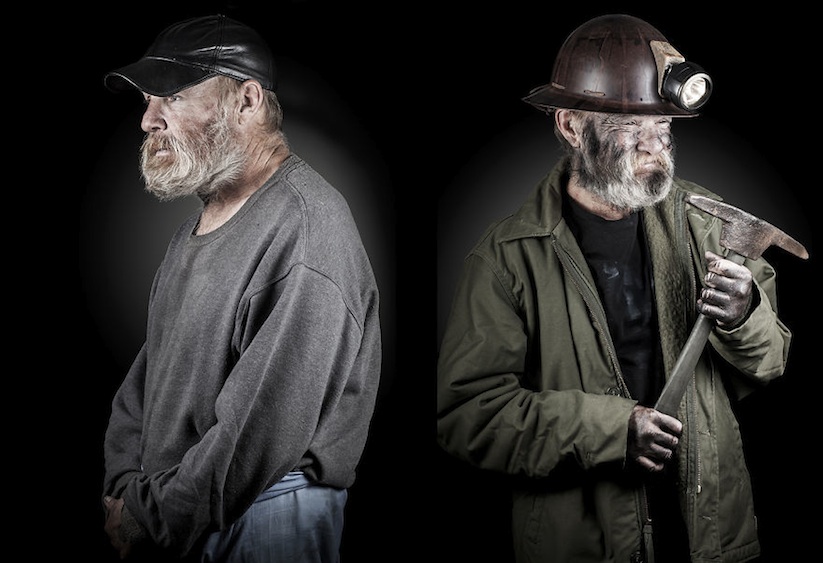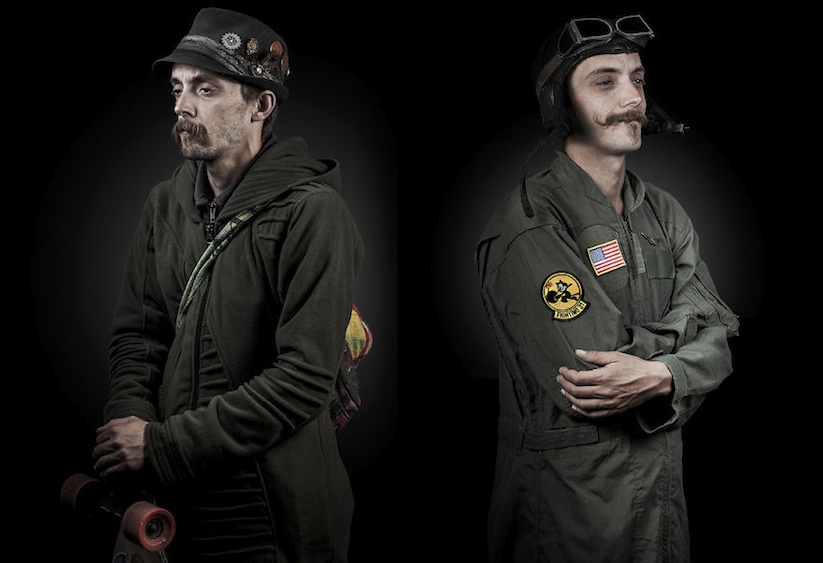„The Prince and the Pauper“ – Photographer Horia Manolache Puts Homeless People Next To Their Dreams

Der in San Francisco lebende Fotograf Horia Manolache widmet sich in einem aktuellen Projekt den Träumen von besonderen Menschen, welche keine Möglichkeit mehr sehen, diese in die Tat umzusetzen: Die Rede ist von Obdachlosen. Hora Manolache portraitierte seine Protagonisten zum einen so, wie sie aktuell auf den Straßen Kaliforniens anzutreffen sind und zum anderen in den Outfits von Jobs, welche sie heute eventuell ausüben würden, hätte das Leben ihnen deutlich bessere Karten zugespielt. Mit seinem Projekt möchte der Künstler allgemeine Vorurteile wie z.B. Faulheit, Alkoholismus usw., die den Ärmsten in unserer Gesellschaft noch immer tagtäglich entgegengebracht werden, relativieren. Er sprach im Rahmen seines Projekts „The Prince and the Pauker“ (z.dt. = Der Prinz und der Bettelknabe) mit Menschen, die keine Zeit mehr für Träume haben, während sie sich täglich auf’s Neue mit der Suche nach Nahrung, Wasser oder einem Schlafplatz auseinanderzusetzen haben und hörte sich ihre Geschichten von Häusern, die an die Bank verloren wurden an oder bekam Berichte aus Kriegsgebieten, welche die Menschen körperlich und seelisch zerbrachen. Um seine Arbeiten in einem Bildband veröffentlichen zu können, sammelt Hora Manolache derzeit Budget via Crowdfunding, bei Indiegogo lässt sich sein Projekt unterstützen. Einige Beispiele aus der Portrait-Reihe und was der Fotograf über sein Projekt verlauten ließ, findet Ihr direkt hier unten. Kuckt doch mal:
I’m raising money to publish a book about what the dreams of the homeless people would have been. I’m trying to change a mentality, a generalisation that has made its mark on the homeless people. I found a common misperception in which homeless people are also mentally ill, lazy and so on. I hope my project will do some justice in this matter and I hope it is a part of a bigger movement in which the social system will try to emulate on people’s needs and not the people on the system’s needs. My project is about the dreams of the people who have forgoten to dream or couldn’t dream. They reached a moment in their life when they don’t have food, water, they don’t have a place to wash themselves, the bank took their house, their mind is unsettled from war horrors or they are wanted by police for an unpaid bill. Now imagine you are in this moment and you want to dream. My book will be about them and the moment when they had the pace to dream and to speak with somebody about their problems without fearing anything. And you will see beautiful people with beautiful minds. I found Jim Goldberg’s “Rich and Poor” exhibited at Pier 24 in San Francisco and seeing the contrast between the photos and the words that his subjects wrote on the photos made me realise that a photo cannot tell the truth or at least not all the truth, it just gives the photographers „truth“. As a consequence, for my project I started to record the stories of the people I photographed, I began to have a personal dialogue that gave me the context that I needed and that could not be found just in the portraits. One of my favourite portraits, “Migrant mother” of Dorothea Lange, strengthened my opinion that showing a closer copy of a person gives a greater response from the viewer and this I think because of the “Gulliverish” impression that the viewer has. You see somebody or something at an unnatural scale or from an unlikely distance. This I believe is the goal of my project, to show the homeless people in an unlikely approach and from an unlikely distance. I have been a photographer for a while and my big question was for many years how I can help somebody with a photograph. It was a paradox for me that a photo with a starving child and an vulture that waits for her to die, takes a Pulitzer Prize. After a while I understood that photography, as writing, can change mentalities and can solve problems. And that is what is needed when it comes to homeless people. Once, I led Honey, a women from my project, to a centre for homeless people so she can find a place to sleep (other than the park) and she told me that it was a while since she was in an elevator and usually, when she enters in a public place, mothers are hiding their children from her. Although my three years old daughter assisted me when I did this project, I can understand the concern of these parents. Because I know this can be a concern, yes I helped the people I photographed as much as I could: food, money, places to sleep, clothing, toolboxes (for fixing a car). I started this project for a class and I didn’t have great expectations from it but now I feel that all the work for this project should be gathered in a book. – Horia Manolache











—
[via DYT]



Schreibe einen Kommentar